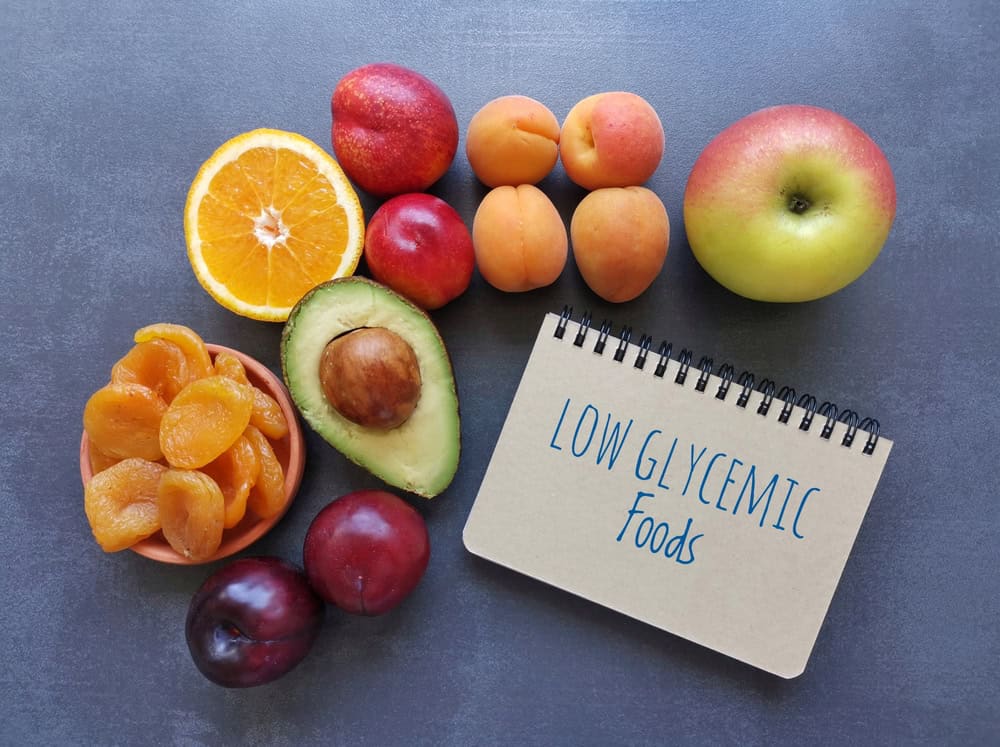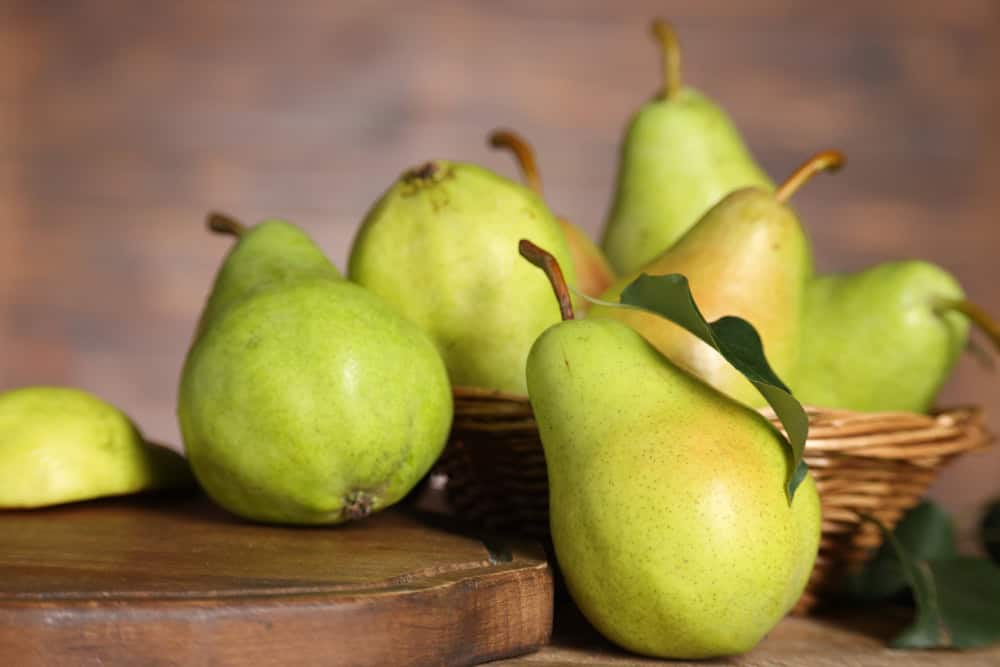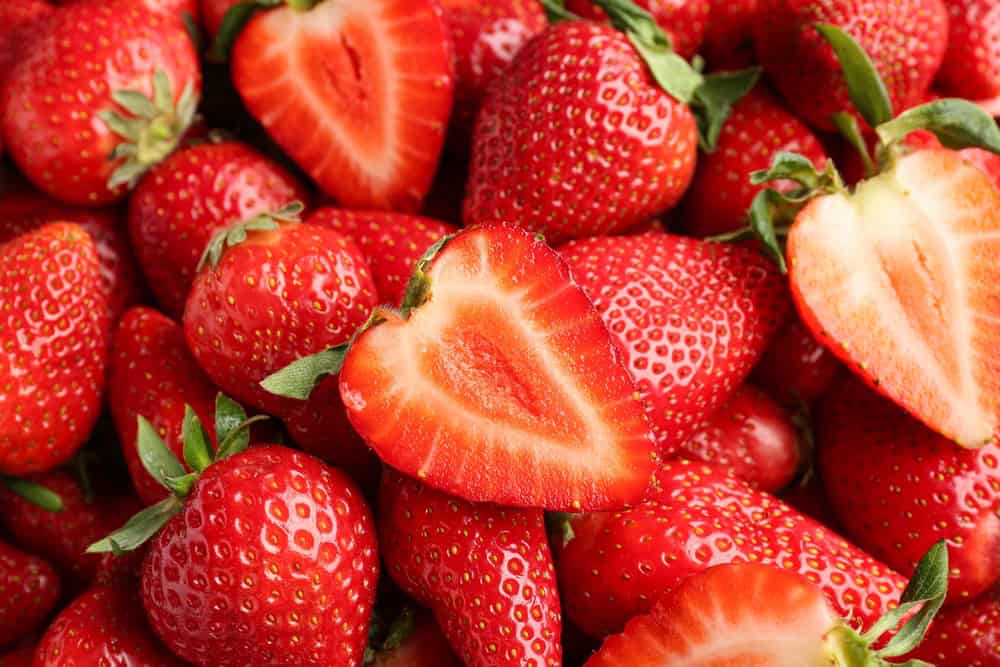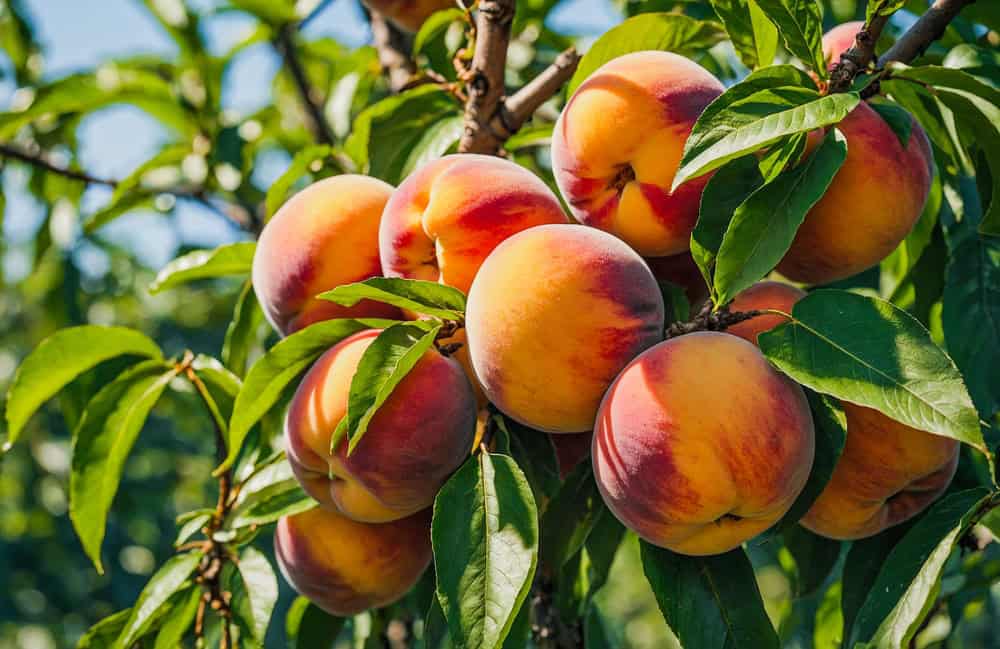
Diabetes does not mean you cannot eat fruits. Some fruits may cause a substantial rise in blood sugar levels; however, some fruits also have a low glycemic index (GI), which means they are digested slowly and release sugar into the bloodstream over a prolonged period, thereby helping to control blood sugar levels.
If you have diabetes or prediabetes, learning the Glycemic Index (GI) of foods can be very beneficial for managing glucose levels.
Let’s explore what GI is, why it is important for diabetes, and which low GI fruits are best for a diabetic diet.
What is the Glycemic Index (GI)?
Glycemic Index is a ranking of how quickly a food that contains pure carbohydrate will raise the blood sugar (glucose) level.
-Low GI: 55 or less (slow glucose release)
–Medium GI: 56-69,
-High GI: 70 or more (quickly raises Glucose)
When you are living with diabetes and consuming meal plans low in GI, your blood sugar levels will not spike suddenly, and you will feel fuller for longer, as well as better manage blood glucose levels.
Nutritionist Mamta Sharma at Tata 1mg says, “Low GI fruits are safe and smart choices for people with diabetes. They provide natural sweetness, essential nutrients, fulfill sweet cravings, and a better sense of fullness without a high spike in blood sugar.”
Why Low-Glycemic-Index Fruits Are Essential For People With Diabetes?
Low glycemic index (GI) fruits are not only a great source of vitamins, minerals, and antioxidants, but they are also rich in dietary fiber, which slows down the sugar absorption process in your body. Fiber keeps you feeling full longer, helping you feel satisfied and encouraging better insulin sensitivity.
Other positive effects of low GI fruits include:
– A slow and steady release of energy throughout the day
– Healthier hearts due to a high antioxidant content
– A reduced risk of experiencing complications associated with type 2 diabetes
– A more manageable weight
Nutritionist Recommended Top 10 Low GI Fruits For People With Diabetes
1. Guava (GI: 12–24)

Guava is a local favorite in India and is one of the best low-GI fruits for people with diabetes. It is high in fiber and vitamin C and can help slow the absorption of sugar in the body.
Best Time to Eat: For optimal effects, consume in the morning or late afternoon.
2. Cherries (GI: 20)

Cherries contain one of the lowest GI fruit levels and are high in anthocyanins, an outstanding antioxidant that may work to regulate blood sugar.
3. Grapefruit (GI: 25)

This zesty fruit may help mitigate insulin resistance and support glucose metabolism.
Note: Grapefruit may interfere with some medications, so check with your physician before adding it to your diet.
4. Apples (GI: 36-40)

Apples are a great fruit for people with diabetes to eat. They are high in soluble fiber (pectin), which helps regulate blood sugar and cholesterol levels. The polyphenols in apples can also help support heart health.
Tip: Eat the skin of the apple for more fiber, and thus a feeling of satiety.
5. Pears (GI: 38)

Pears are sweet, yet their glycemic index is on the low side. They are a good source of vitamin C and fiber, which can support digestion and help you control sugar levels.
When to Eat: In between meals or as a healthy mid-evening snack.
6. Oranges (GI: 40)

Citrus fruits like oranges have moderate sugar levels and also have high vitamin C and flavonoid levels, which may help increase insulin sensitivity.
Avoid Buying: Packaged orange juices (GI is much higher!).
7. Plums (GI: 40)

Although they are sweet, plums have a low glycemic index. They contain phenolic compounds that promote glucose metabolism and lower inflammation.
Note: Dried plums (prunes) can also help with digestion, but moderation is advised.
8. Strawberries (GI: 41)

Strawberries have low sugar content and are high in antioxidants, making them a great substitute for dessert. They help fight oxidative stress, which is linked to complications with diabetes.
Pair it with: Greek yogurt as a protein-filled, diabetes-friendly snack.
9. Peaches (GI: 42)

Peaches are hydrating, contain fiber, and can satisfy a desire for something sweet at the same time, satisfying a sugar craving naturally. They may also be a good source of both vitamins A and C.
Best enjoyed: fresh if possible, since canned peaches often have added sugar.
10. Kiwi (GI: 50)

Kiwi is jam-packed with vitamin C, potassium, and fiber, allowing digestion to function more optimally and helping to regulate your blood sugar levels.
How to Use Low GI Fruits in Your Diabetic Diet
-Pair your fruits with protein or healthy fats, such as handfuls of nuts or yogurt, to help avoid spikes in your blood sugar.
-Do not drink fruit juices as they do not include fiber and can greatly elevate blood sugars.
-Limit to 1-2 servings of whole fruit per day.
-If possible, try to consume the fruits in season and locally grown for maximum nutrition.
Ideal Time to Eat Fruits for People with Diabetes
The best time for people with diabetes to eat fruits is mid-morning or mid-evening in between meals. This is because this time will help keep blood sugar levels steady, so as not to fluctuate before each meal. Avoid eating fruit right after a meal or at night to prevent spikes in blood sugar. Furthermore, by having fruits with a source of protein or fiber – such as nuts, or yogurt – this also slows the absorption of sugar and keeps you fuller for longer.
Portion Control
Despite the fact that these fruits are low on the glycemic index, it is still important to note how much you are consuming! Even with low-GI fruits, over-consumption can lead to higher levels of glucose.
Example: One medium apple or ½ cup of berries is an appropriate serving size.
You can try pairing your fruit with a handful of almonds, a spoon of chia seeds, or a slice of cheese to create a better balance of blood sugar.
Final Takeaway
Managing diabetes doesn’t have to mean avoiding fruit completely, but it does require smart choices. By aiming for low GI options such as apples, guava, and cherries, you can enjoy the sweetness of fruit without guilt or raising your blood glucose.
With sensible portions of fruit, taking regular blood glucose readings, and mindfulness about what you’re eating, you can keep your blood sugar in a good range and stay healthy.
FAQs
Q. What fruits should you eat for diabetes?
Low GI fruits such as apples, guava, cherries, pears, and oranges are the best fruits for someone with diabetes. Low GI fruits offer fruit with the positive benefits of helping to keep blood sugar stable.
Q. Can I eat fruit every day if I have diabetes?
Yes. It’s safe for someone with diabetes to eat 1–2 servings of whole fruit each day, ideally with protein or fiber to help reduce blood glucose spikes.
Q. Is a banana okay for people with diabetes?
Bananas are moderate GI foods (51-55). A small banana, or a semi-ripe banana, is fine in moderation, but avoid overripe bananas as they tend to have more sugar.
Q. Are fruit juices ok for people with diabetes?
No. Fruit juices do not contain fiber and cause blood sugar spikes very quickly. Whole fruits are always a better option to keep fruit healthy and balanced.
(The article is written by Deepa Sarkar, Medical Writer, and reviewed by Monalisa Deka, Deputy Manager, Clinical Health & Content, Medical Affairs)